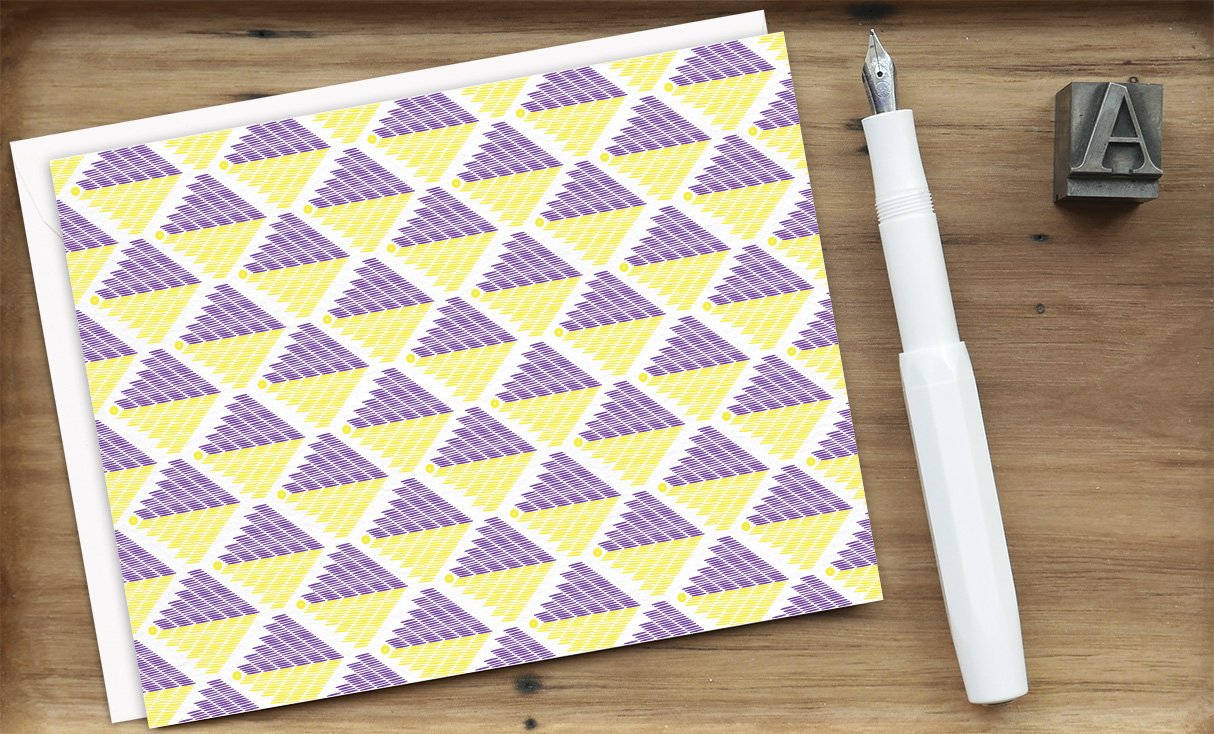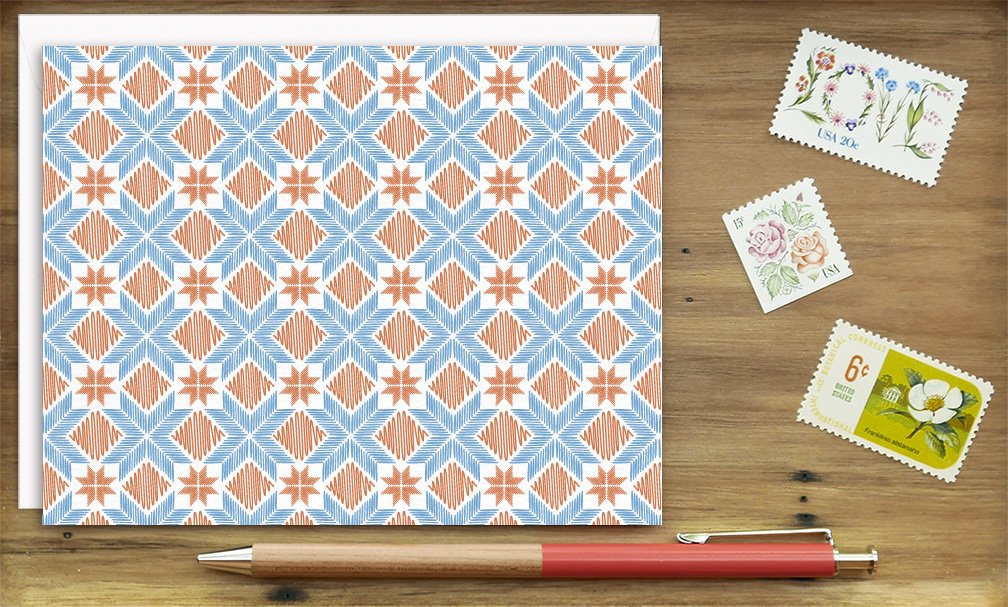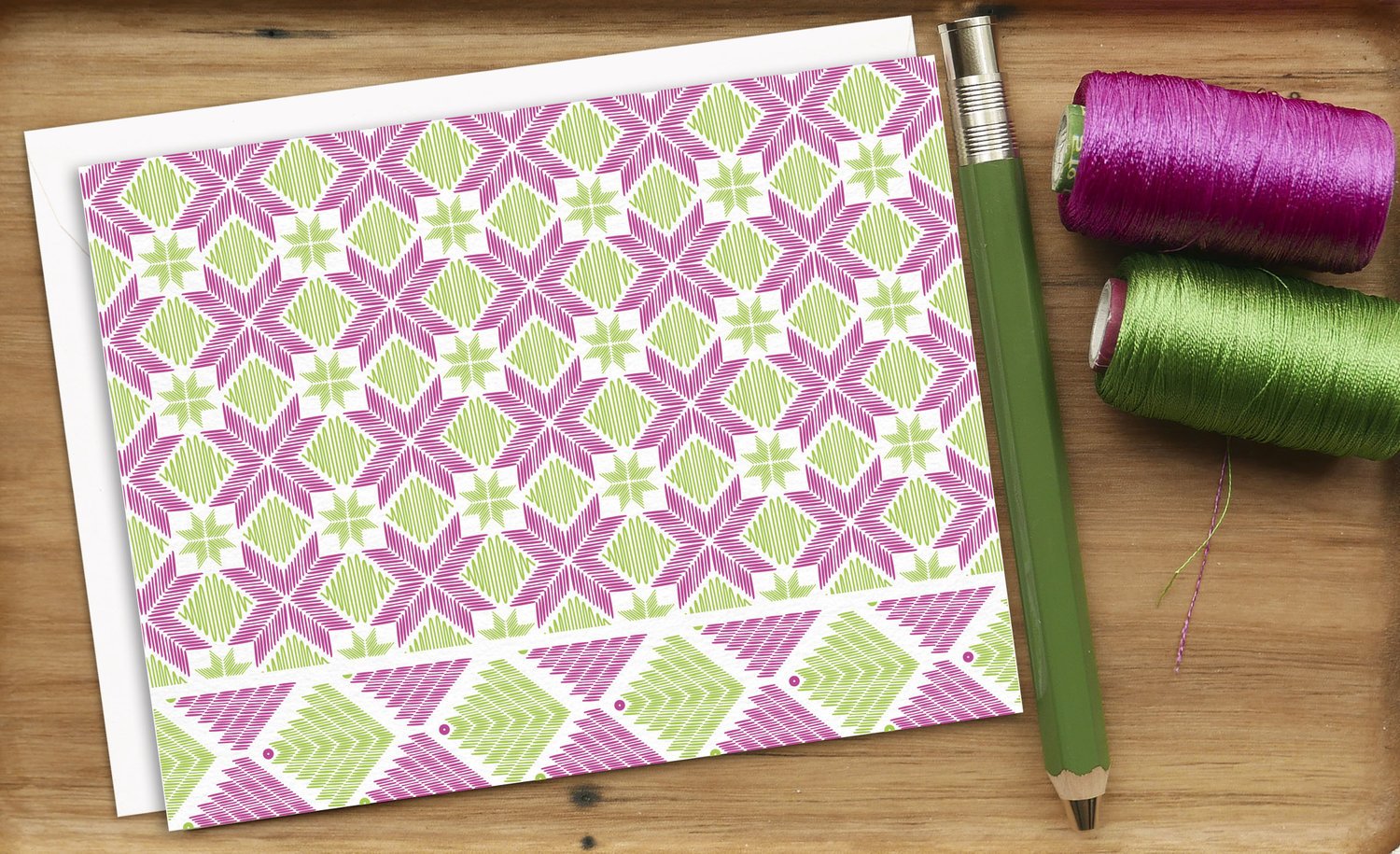Thirma Phulkari Collection Greeting Card






Thirma Phulkari Collection Greeting Card
Honoring the texture of embroidered techniques, each design is inspired by phulkari done on white cloth. The Thirma Collection assorted set includes 4 blank letterpress greeting cards of 4 different designs, perfect for any occasion.
5.5 x 4.25" Folded
4 Blank Cards + Euro Flap Envelopes made of recycled paper
Compostable Packaging + Recyclable Paper
Printed on 100% cotton paper made of waste from the fashion industry
A micro-batch printed by hand using an antique Vandercook letterpress, so slight variations are not just expected, but an ode to the handmade process of phulkari embroidery.
Inspired by Punjab, Handprinted in Seattle.
Thirma Phulkari Baagh
Thirma Phulkaris are a distinct style of phulkari embroidery, characterized by their use of finely woven white khaddar (handspun cotton) fabric, a feature that gives them their name, as thirma which translates to "white." The white khaddar serves as a canvas, much like the white cotton paper in letterpress printing. These phulkaris were traditionally worn by elder women, the matriarchs, the generational knowledge keepers and storytellers of families, whose wisdom and experience are intricately woven into the fabric of their communities.
Baagh (garden) is the name given to phulkaris in which the embroidery covers the entirety of the cloth with intricate needlework. Capturing a Baagh on the letterpress posed quite the technical challenge. Using a Vandercook letterpress, each card was manually printed one color at a time, requiring precision and immense patience to achieve the tight registration of colors needed to recreate the complexity of a Baagh — carefully testing the alignment and approach each time. These cards have been my favorite creative challenge and a true labor of love.
Thoughtfully Crafted
When I did my first print run in 2017, I was determined to source each component as thoughtfully and sustainably as possible. I started by carefully considering the paper I was using. Recognizing the challenges of cotton manufacturing rooted in industrialized agriculture, colonial exploitation, and systemic harms, I decided I wanted to use paper that was circular by design. Which is why, I selected a paper supplier that uses waste from the fashion industry to produce paper. I then selected soy-based ink because it is both biodegradable and has a lower carbon footprint. For packaging, living in a city with commercial composting, I decided to use compostable plant-based plastic for individual packaging of the cards and compostable labels. I remain committed to donating 5% of each purchase to women’s health organizations.



